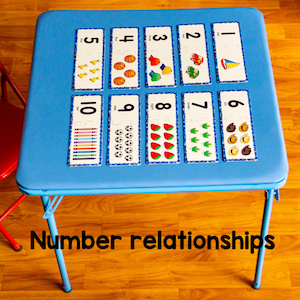|
Numbers are all around us, and they play a big part in our lives. You might think that math is just something you learn in school, but understanding numbers, also known as "number sense," is super important in real life too! Teaching our children to understand numbers helps them develop a strong and intuitive grasp of math concepts. So, let's explore what number sense is and how we can make math exciting in the classroom. What is number sense?Number sense is like having a superpower for numbers. It's not just about memorizing math facts but truly understanding how numbers work together. It covers counting, number relationships, estimation, identifying patterns, and understanding place value. It provides the tools to be able to handle every day situations that involve math confidently and comfortably. Let's take a closer look at some of the concepts it covers and how we can help kids understand the concepts. Counting skillsChildren need to learn to count fluently, not by rote, but with an understanding of each number being a quantity. When they count objects, each number relates to an object being counted. Touching objects as they count them will help with this correlation. It is important to practice counting objects until they are able to correctly count them every time. Do hands on activities so the math is tangible. Start with real-life objects. Let students count and group toys, buttons, or snacks. Count books, pencils, or even footsteps. Ask questions like, "Can you find five red objects?" or "How many shoes do we have?" This makes numbers real and relatable. Number relationshipsIt is important for kids to see how numbers relate to one another. For example: 6 is one more than 5 or two less than 8. These relationships will help them understand the basic operations of addition and subtraction and later on multiplication and division. Math vocabulary for these relationships in also important. Terms like: more than, less than, equal to, and greater than are only a few examples that can be taught to help them understand these relationships. Play games that involve looking for clues that use some addition and subtraction to solve them. Practice making groups that show the relationships between numbers. Play "Guess the missing number" by answering yes or no questions. EstimationIt is not always possible to count everything, so it is important to make educated guesses for quantities. For example: How many candies are in the jar? Children often have little idea about how to estimate and the responses are way off. It will take practice estimating and then counting for them to understand how to get closer in their approximations. Turn estimation activities into challenges. Who can get the closest number? Can they get it without going over? Practice using small amounts at first and gradually increase the number of objects being estimated as the results get closer. Identifying patternsGet kids to recognize patterns in numbers, like even numbers (2, 4, 6) or the way odd numbers always end in 1, 3, 5, 7, or 9. Try skip counting games and look for patterns when counting. For example: when counting by 5 all numbers end in 5 or 0. Reading books about math patterns is also fun to do and helps kids understand the patterns better. For example: Even Steven and Odd Todd shows the relationship between even and odd numbers. Amanda Bean's Amazing Dream shows how multiplication is just a faster way of adding. There are many books that show math patterns and relationships. Find some that fit with the concepts that you are teaching to help enrich your students' understanding. Understanding place valueIt is important that students understand what the relationship is between multiple numbers grouped together and their placement or order. For example: 4 in 42 means forty, and 2 means two). We refer to these as digits that represent different values. Play games that encourage kids to identify the mystery digit or build a number with the place values given. Check out this blog post for more about place value and some activities and resources that might interest you. Connecting number sense to the real worldNumber sense is not just for math classes. It is a necessary skill for navigating in the real world. The more we focus on how it is used in practical settings, the more our students will see its purpose and begin to use it more confidently. Being able to understand number sense and use it effectively will help with handling money, time, and measurements. It will also be used in many different settings, whether budgeting an allowance, planning a trip, or even cooking a favorite meal. Remember, math is not just about numbers; it's about exploring, discovering, and making sense of the world around us. Next time I will share ideas and activities that can bring number sense into everyday activities, and how we can encourage activities at home to help our students develop a solid understanding of how to use their number sense skills in their world. Related PostsComments are closed.
|
About Me Charlene Sequeira
I am a wife, mother of 4, grandmother of 9, and a retired primary and music teacher. I love working with kids and continue to volunteer at school and teach ukulele. Categories
All
|
















 RSS Feed
RSS Feed